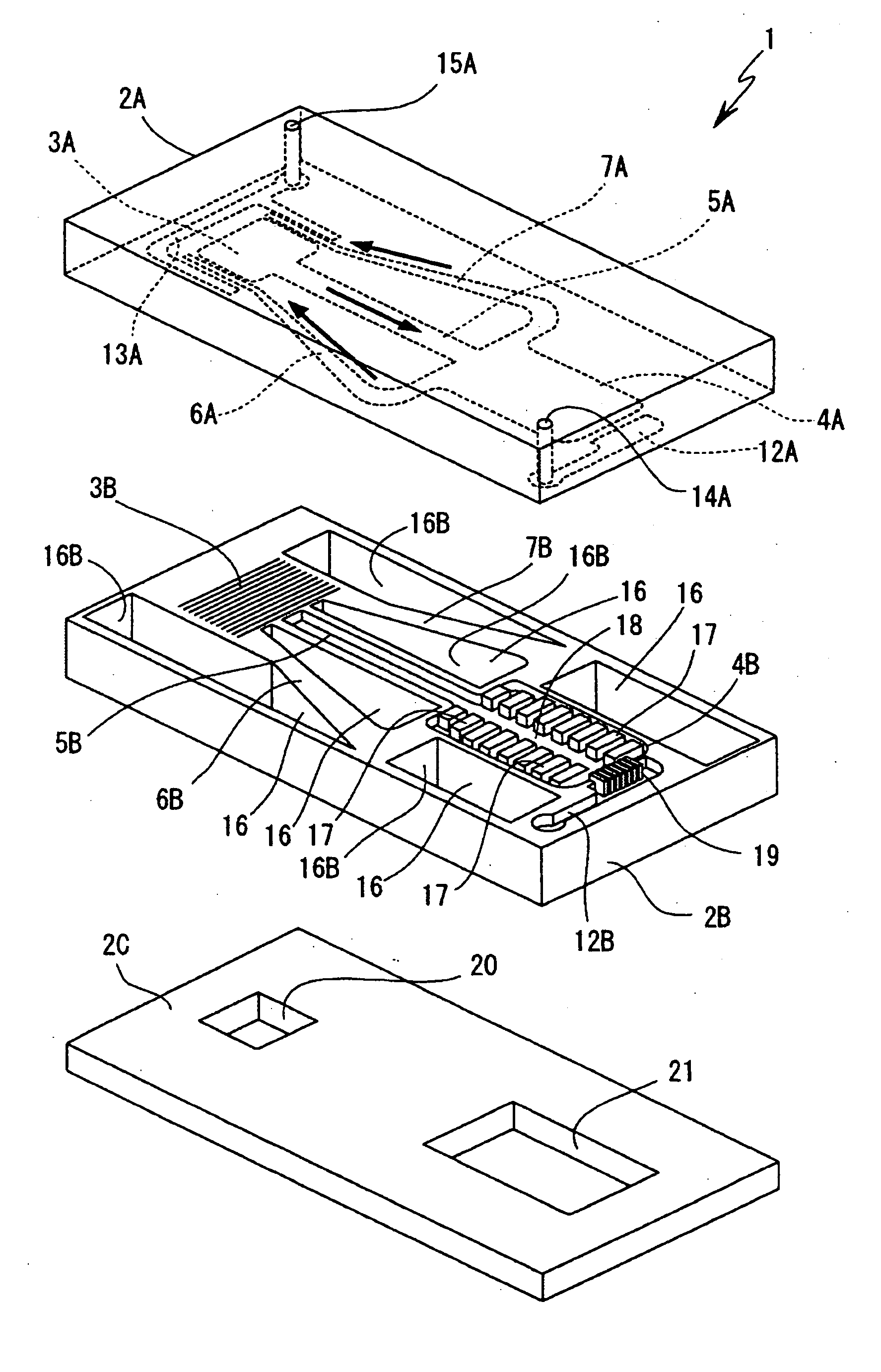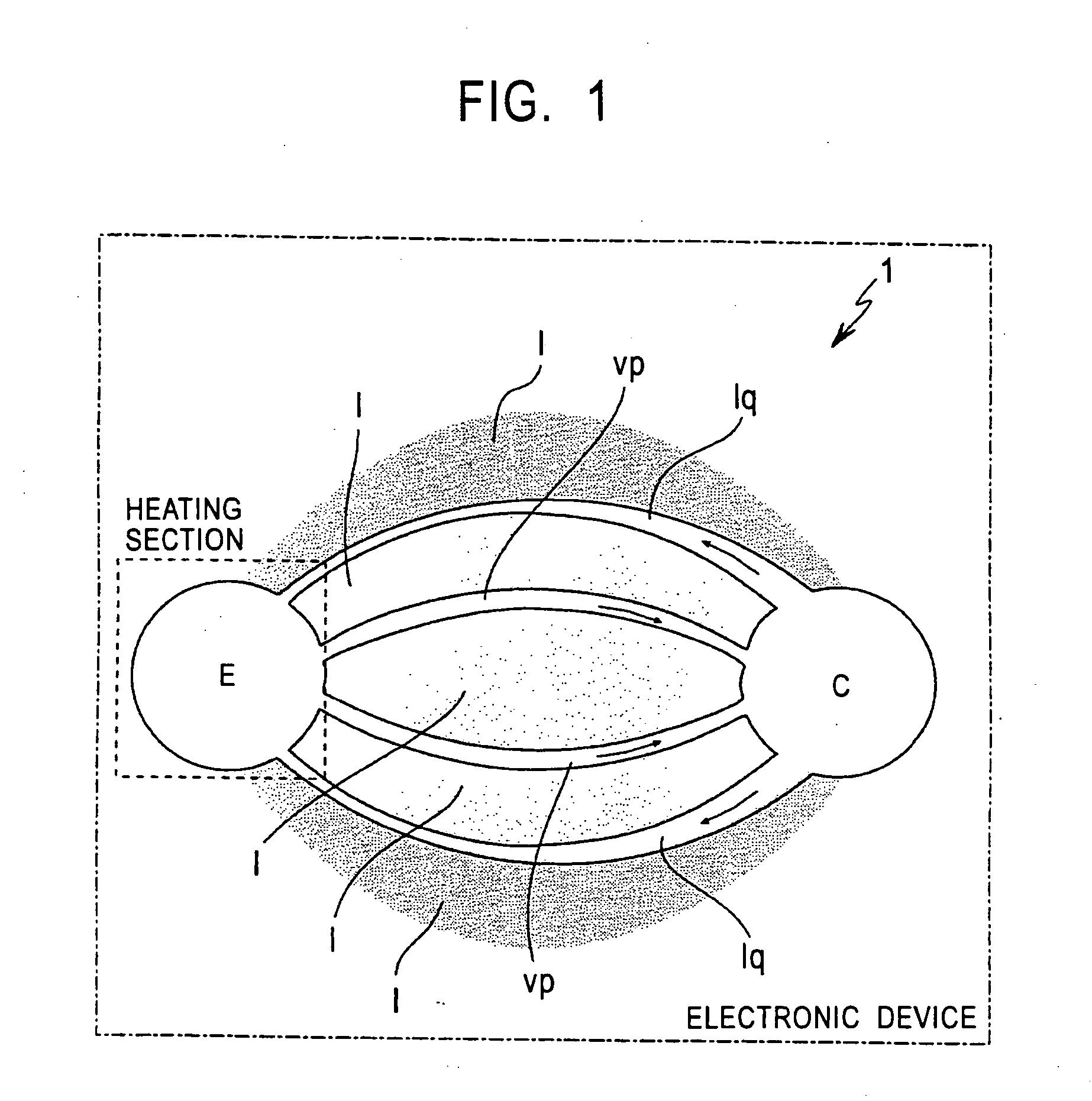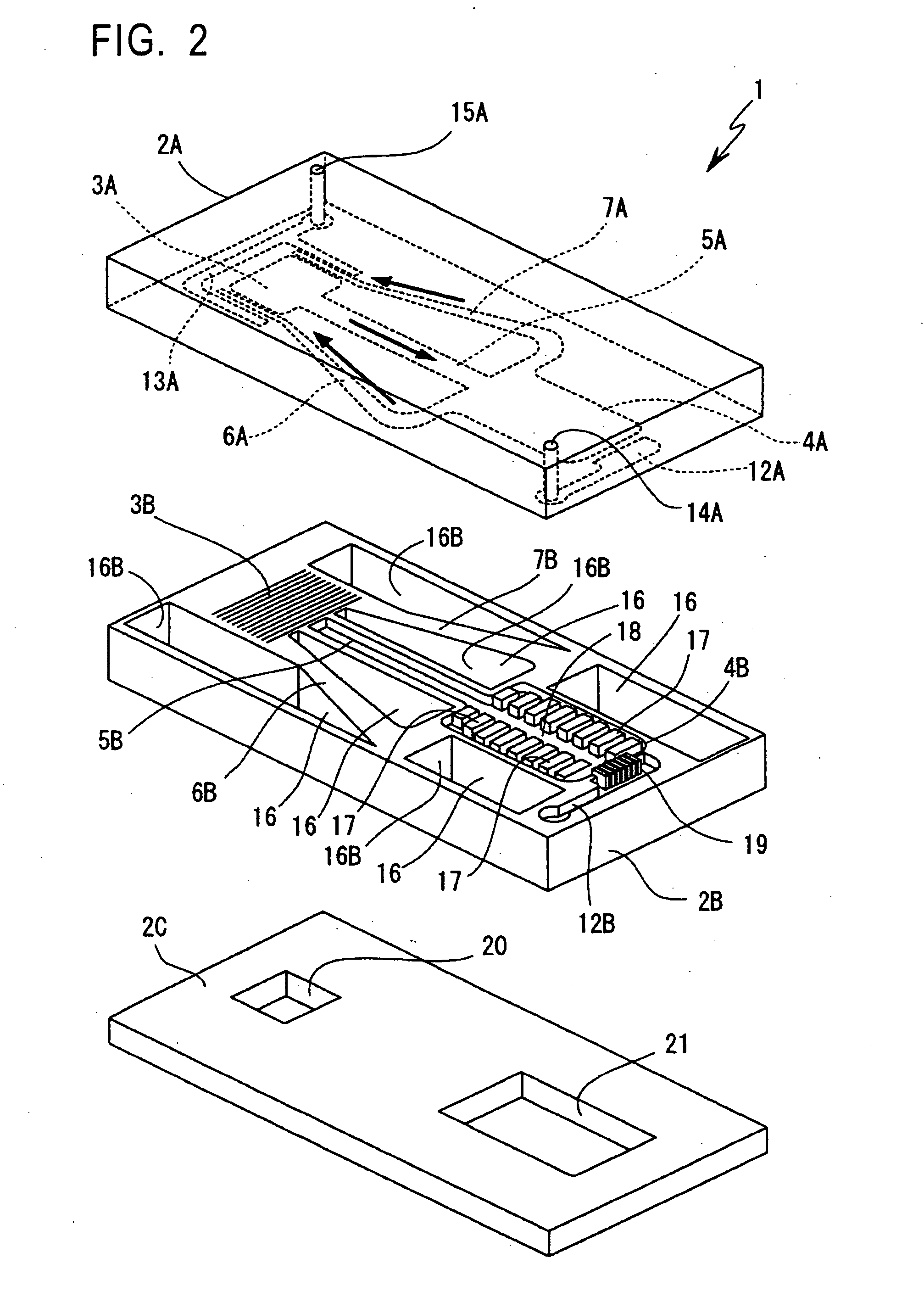Heat transport device and electronic device
a technology of electronic devices and heat transport devices, which is applied in the direction of semiconductor devices, lighting and heating apparatus, basic electric elements, etc., can solve the problems of vapor hindered by liquid, heat transport efficiency may decline, and heat transport efficiency and ability can be reduced, so as to improve the capillary force of liquid channels, reduce pressure loss, and stable operation
- Summary
- Abstract
- Description
- Claims
- Application Information
AI Technical Summary
Benefits of technology
Problems solved by technology
Method used
Image
Examples
Embodiment Construction
[0032] A heat transport device of the present invention is suitably used for devices using a capillary pumped loop, a loop heat pipe, and the like, and is applicable to radiating and cooling systems in various electronic devices. For example, in applications to information processing devices, such as computers, portable devices, and the like, the heat transport device is effective in enhancing the efficiency of radiation and cooling of various devices (e.g., CPUs, image pickups, light emitting elements, driving motors for use in small hard disk drives and drives for optical media, and actuators used in a thermally strict condition) without increasing the size and thickness of the devices.
[0033] Herein, the “heat transport device” means, in a narrow sense, a device for transporting heat from a heating element with working fluid or the like, but means, in a broad sense, the entire system including a heating element, a cooling or radiating means, a temperature controller, and so on.
[...
PUM
 Login to View More
Login to View More Abstract
Description
Claims
Application Information
 Login to View More
Login to View More - R&D
- Intellectual Property
- Life Sciences
- Materials
- Tech Scout
- Unparalleled Data Quality
- Higher Quality Content
- 60% Fewer Hallucinations
Browse by: Latest US Patents, China's latest patents, Technical Efficacy Thesaurus, Application Domain, Technology Topic, Popular Technical Reports.
© 2025 PatSnap. All rights reserved.Legal|Privacy policy|Modern Slavery Act Transparency Statement|Sitemap|About US| Contact US: help@patsnap.com



